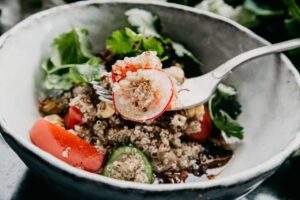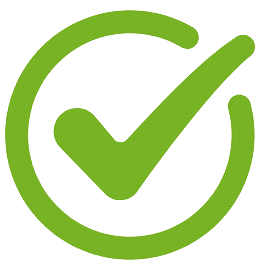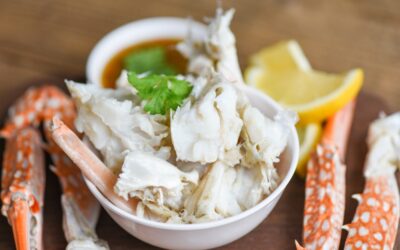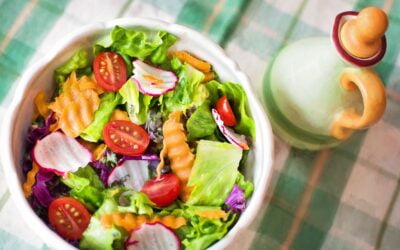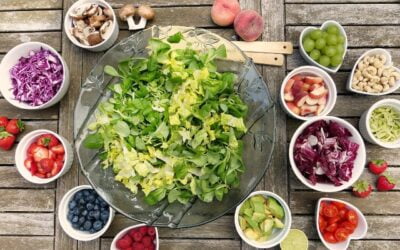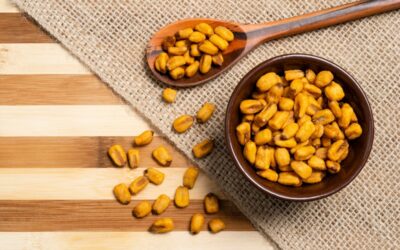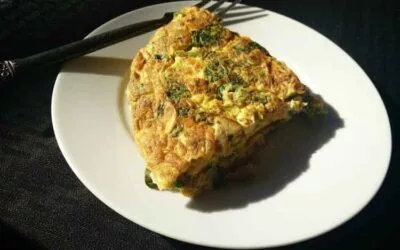Hypertension affects more than a billion people worldwide and this numbers are growing rapidly. In fact, the number of people with hypertension has doubled in the last 40 years. This is a serious health concern as hypertension is linked to a higher risk of conditions such as heart disease, kidney failure and stroke. As the diet is supposed to play a major role in the development of hypertension. So, doctors and policymakers have developed specific diet strategies to reduce it. There is a lot of diet in the market to lose weight. However, the dash diet action plan proven to lower blood pressure or hypertension and cholesterol without medication.
So, in this article we will tell you a specific DASH diet meal plan and shopping list which is specially designed to combat hypertension and to reduce the risk of heart disease.
What is the DASH Diet?
The U.S. National Heart Lung and Blood Institute (NHLBI) recommend a DASH diet meal plan for people suffering with hypertension. DASH diet stand for “Dietary Approach to Preventing Hypertension”, which is specifically designed to help people to reduce their blood pressure level.
It’s just like a simple diet. In this diet you have to control sugar, fat and junk food and must prefer fruits, vegetables, nuts, low fat dairy substances, fish, meats and beans etc. In addition, salt and low-oil food are consumed in DASH diet meal plan to keep blood pressure under control. Here you have to consume up to 2300 mg of sodium daily.
| Footnote. Several researchers observed that hypertension was found to be very low in people who consumed more of the plant-based diet, such as vegetarian people. That is why the DASH diet emphasizes fruits and vegetables containing some lean protein sources like chicken, fish and beans. This diet suggests less in red meat, salt, sugar and fat. |
Types of DASH Diet.
There are two types of DASH diet.
- Standard DASH Diet: It contains up to 2300 mg of sodium per day.
- Low Sodium DASH Diet: It contains up to 1500 mg of sodium per day.
Both this diet are prescribed for reduction of sodium content, which helps to reduce blood pressure levels and reduce risk to other cardiovascular diseases.
Doctors believe that people with hypertension greatly benefited from DASH diet meal plan, one of the main reasons is that it reduces salt intake.
The regular DASH diet meal plan program does not encourage sodium exceeding 1 teaspoon (2,300 mg) per day, which is in line with most national guidelines.
Low-salt version 3/2 of sodium per day recommends not exceeding 4 teaspoons (1,500 mg).
Advantages of DASH Diet or How Good Is DASH diet?
DASH Diet Plan for Blood Pressure or Hypertension.
Blood pressure is a measurement of the force applied to your blood vessels and organs as your blood passes through them. It counts in two numbers:
Systolic Pressure: Pressure in your blood vessels when your limit beats.
Diastolic Pressure: Pressure in your blood vessels between the beats of the heart, when your heart is at rest.
Normal blood pressure for adults is less than 120 mmHg of systolic pressure and diastolic pressure below 80 mmHg. It is usually written with systolic blood pressure above diastolic pressure, such as; 120/80 mmHg.
People with blood pressure of 140/90 mmHg are considered hypertension.
Interestingly, DASH diet meal plan control hypertension in both healthy people and people with hypertension.
In the study, people on the DASH diet meal plan still experienced low blood pressure, even if they did not lose weight or restricted salt intake.
These low-salt DASH diet results were most impressive among those who already had hypertension, systolic blood pressure was reduced by an average of 12 mmHg and diastolic blood pressure by 5 mmHg.
In people with normal blood pressure, it reduces systolic blood pressure by 4 mmHg and diastolic to 2 mmHg.
Keep in mind that a decrease in blood pressure does not always translate to a low risk of heart disease.
DASH Diet for Weight Loss.

The DASH diet is a perfect weight loss solution, within 2 weeks you can drop pounds, boost metabolism, and get healthy. Yes, there should always be healthy food to keep the body health along with weight loss. (1) You can do this with the help of DASH diet meal plan. You can avoid several diseases by with the reduction of the weight.
For weight loss, you also have to take care of your diet with exercise. If you divide your food into some parts, it makes easier for weight loss. Similarly, there is a DASH diet meal plan (mentioned below) that helps in weight loss as well as to control hypertension and prevent many diseases.
According to the National Heart Lung and Blood Institute, DASH diet aims to incorporate these nutrients in such quantities every day;
- 27 percent of total fat calories.
- Saturated fat 6 percent or less.
- Protein 18 percent.
- Carbohydrates 55 percent.
- Fiber 30 grams or more.
Reduce the Risk of Cancer.

A recent review indicated that people who followed the DASH diet had a lower risk of cancer, including colorectal and breast cancer. (2), (3)
Reduces The Risk of Metabolic Syndrome.
Some studies have noted that DASH diet reduces your risk of metabolic syndrome by up to 81%. (4)
DASH Diet for Diabetes.

The diet has been linked to a lower risk of type 2 diabetes. Some studies suggest it could improve insulin resistance. (5)
Reduce the Risk of Heart Disease.
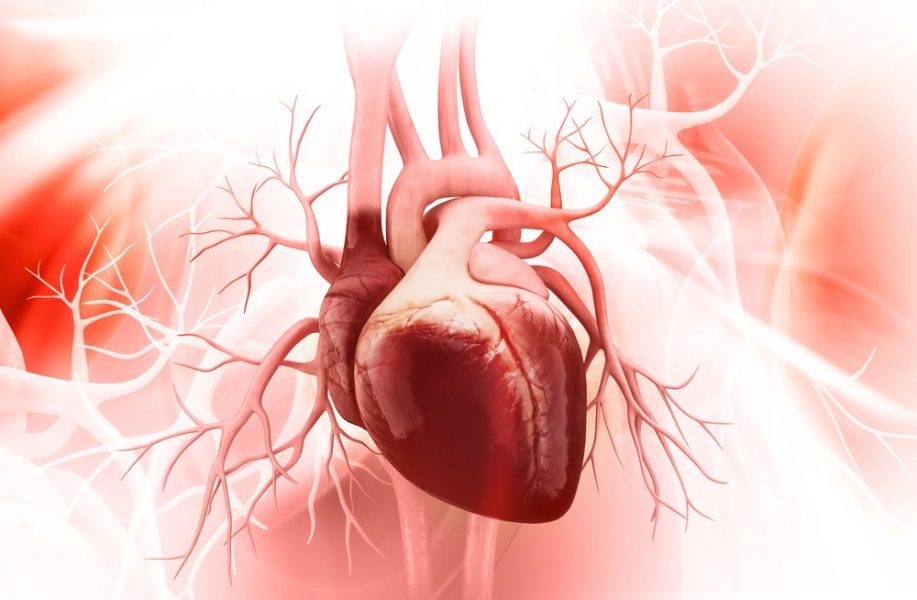
In a recent review in women, a 20% lower risk of heart disease after a diet such as DASH and 29% lower risk of stroke was associated with. (6)
Many of these protective effects are responsible for the high fruit and vegetable content of the diet. In general, eating more fruits and vegetables can help to reduce the risk of illness.
| Footnote. DASH diet lowers blood pressure level and can help in weight loss. This can reduce your risk of diabetes, heart disease, metabolic syndrome and some cancers. |
Is DASH Diet Plan Works For Everyone in Hypertension?
When studying on DASH Diet, it was determined that the greatest decrease in blood pressure resulted from the lowest salt intake, the benefits of salt restrictions on health and life are unclear.
For people with high blood pressure, decreasing salt intake significantly affects blood pressure. However, in people with normal blood pressure, the effects of reducing salt intake are very low.
The theory that some people are sensitive to salt, this means that salt has a greater effect on their blood pressure.
| Footnote. If your salt intake is high, reducing it can provide great health benefits. The comprehensive salt ban can only be beneficial for those who are sensitive to salt or have high blood pressure, according to advice on DASH diet. |
Banning Salt Isn’t Very Good For You.
Eating too much salt has been linked to health problems, such as an increased risk of heart disease, insulin resistance and fluid retention.
A low-salt version of DASH Diet recommends that people get 3/5 of sodium per day. Do not eat more than 4 teaspoons (1,500 mg).
However, it is not clear whether there are any benefits to reducing salt intake, even in people with high blood pressure.
In fact, a recent review found no correlation between salt intake and the risk of death from heart disease, despite the fact that reducing salt intake marginally reduced blood pressure.
Although most people eat too much salt, their salt intake can be reduced from 2-2.5 teaspoons (10-12 g) in very high doses to 1-1.25 teaspoons (5–6 g) per day.
This goal can be easily achieved by reducing the amount of highly processed food in your diet and eating most whole foods.
| Footnotes. Although it is beneficial for most of the people to reduce salt intake from processed foods as eating too much salt can also be harmful. |
| Read Now: Nutrition Diet Plan For Bulking Up |
Dash Diet Food List.
DASH Diet does not list specific food to eat. Instead, it recommends specific servings of different food groups.
The number of servings you eat depends on how many calories you consume. Below is an example of food fractions based on a 2,000-calorie diet.
Whole grains: 6 to 8 servings per day.
Examples of whole grains include whole wheat or whole grain bread, whole grain breakfast cereals, brown rice, bulgur wheat, quinoa and oatmeal.
Examples include:
1 ounce (28 g) dry, whole grains.
1/2 cup of cooked rice, pasta or cereals 2 cups (95 g).
1 piece of whole grain bread.
Vegetables: 4-5 servings per day.
All vegetables are allowed in DASH Diet.
Examples include:
1 cup (about 30 g) raw, leafy green vegetables such as spinach or kale.
1/2 cup of chopped vegetables, 2 cups (about 45 g) – raw or cooked – such as broccoli, carrots, squash or tomatoes.
Fruit: 4-5 servings per day.
If you’re following the DASH approach, you’ll be eating a lot of fruit. Examples of fruits you can eat may include pineapples and mangoes, apples, pears, peaches, berries and tropical fruits.
Examples of a serving include:
1 medium apple.
1/2 cup of dried apricots 4 cups (50 g).
1/2 of fresh, frozen or canned peaches 2 cups (30 g).
Dairy Products: 2-3 servings per day.
Dairy products in DASH diet should be low in fat. Examples comprises of skim milk and low-fat cheese and yogurt.
Examples of a serving include:
1 cup of low-fat milk (240 ml).
1 cup (285 g) of low-fat yogurt.
1.5 oz (45 g) of low-fat cheese.
Lean chicken, meat and fish: 6 or some serving per day.
Choose a lean cut of meat and occasionally try to eat red meat – no more than once or twice a week.
Examples of a serving include:
1 ounce (28 g) cooked meat, chicken or fish.
1 whole egg.
Nuts, seeds and legumes: 4-5 servings per week.
These include almonds, peanuts, hazelnuts, walnuts, sunflower seeds, flax seeds, kidney beans, lentils and split peas.
Examples of a serving include:
1/3 cup (50 g) nuts.
2 tablespoons of walnut butter (40 g).
2 tbsp (16 g) seeds.
1/2 of cooked pods 2 cups (40 g).
Fat and oil: 2-3 serving per day.
DASH diet recommends vegetable oils compared to other oils. These include margarine and oil such as canola, corn, olives or safflower. It also recommends low-fat mayonnaise and mild salad dressings.
Examples of a serving include:
- Soft margarine – 1 teaspoon (4.5 g).
- Vegetable oil – 1 teaspoon (5 ml).
- Mayonnaise – 1 tablespoon (15 g).
- Salad – 2 tablespoons (30 ml).
Candy and Sugars: 5 or fewer servings per week.
Sugar should be kept at least in DASH diet, so limit the intake of candy, soda and table sugar. DASH diet also prevents unrefined sugars and alternative sugar sources, such as Agave Syrup.
Examples of a serving include:
- Sugar – 1 tablespoon (12.5 g).
- jelly or jam – 1 tablespoon (20 g) .
- lemonade – 1 cup (240 ml).
| Footnote. DASH Diet does not list specific foods to eat. Instead, it is a dietary pattern, focused on the serving of dietary groups. It is possible to align your current diet with DASH diet. Just eat more fruits and vegetables, choose low-fat products as well as lean proteins and limit your intake of processed, high-fat and sugary food. |
DASH diet Foods to Avoid.
Here are the list of food which you must avoid in DASH diet;
- Drinks with high sugar.
- High fat snacks.
- Food with high in salt.
- Candy.
- Cookies.
- Chips.
- Butter.
- Cheese.
- Whole milk.
- Cream.
- Food made from lard.
- Palm and coconut oils.
DASH Diet Plan for 2000 Calories.
Here’s an example of one week diet plan or dash diet sample menu; basically based on 2,000 calories per day;
Monday.
Dash Diet Breakfast: 1 cup (90 g) oatmeal with 1 cup (240 ml) milk.
1/2 cup (75 g) blueberries and 1/2 cup (120 ml) fresh orange juice.
Dash Diet Snack: 1 medium apple and 1 cup (285 g) low-fat yogurt.
Lunch: Tuna and mayonnaise sandwiches made with 2 slices of whole grain bread, 1 tablespoon (15 g) mayonnaise, 1.5 cups (113 g) of green salad and 3 ounces (80 g) of canned tuna.
Dash Diet Snack: 1 medium banana.
Dinner: 1/2 cup with each of broccoli and carrots, 3 ounces (85 g) of cooked lean chicken breast in 1 teaspoon (5 ml) of vegetable oil with 2 cups (75 g). 1 cup (190 g) of brown rice.
Tuesday.
Breakfast: 2 slices of whole wheat toast with 1-teaspoon (4.5 g) margarine.
1 teaspoon (20 g) of jelly or jam.
1/2 cup of fresh orange juice 2 cups (120 ml) and 1 medium apple.
Snack: 1 medium banana.
Lunch: 3 ounces (85 g) of lean chicken breast with 2 cups (150 g) green salad, 1.5 oz (45 g) of low-fat cheese and 1 cup (190 g) brown rice.
Snack: 1/2 of canned peaches 2 cups (30 g) and 1 cup (285 g) of low-fat yogurt.
Dinner: 3 ounces (85 g) of salmon cooked in 1 teaspoon (5 ml) vegetable oil with 1 cup (300 g) of boiled potatoes and 1.5 cups (225 g) of boiled vegetables.
Wednesday.
Breakfast: 1 cup (90 g) oatmeal, 1 cup (240 ml) skim milk and 1/2 cup (75 g) with blueberries. 1/2 cup of fresh orange juice (120 ml).
Snack: 1 medium orange.
Lunch: 2 slices of whole wheat bread, 3 ounces (85 g) of lean turkey, 1.5 oz (45 g) of low-fat cheese,
1/2 cup of green salad, 2 cups (38 g) of cherry tomatoes.
Snack: 1.5 oz (45 g) cottage cheese and 4 whole-grains with 2 cups (75 g) canned pineapple.
Dinner: 6 ounces (170 g) of cod fish, 1 cup (200 g) of mashed potatoes, 1/2 cup of green peas, 2 cups (75 g) of broccoli.
Thursday.
Breakfast: 1 cup (90 g) of oatmeal, 1 cup (240 ml) of skim milk and 2 cups (75 g) of raspberries. 1/2 cup of fresh orange juice.
Snack: 1 medium banana.
Lunch: 4.5 oz (130 g) of grilled tuna, 1 boiled egg, 1/2 cup (152 g) of green salad, 2 cups (38 g) of cherry tomatoes (30 ml) made in small quantities.
Snack: 2 cups (30 g) of canned pear and 1 cup (285 g) of low-fat yogurt.
Dinner: 3 ounces (85 g) of pork fillet with 1 cup (150 g) of mixed vegetables and 1 cup (190 g) of brown rice.
Friday.
Breakfast: 2 boiled eggs, 2 slices of turkey bacon, 2 cups (38 g) of cherry tomatoes, 1/2 cup of baked beans, 2 cups (80 g) and 2 slices of whole-wheat toast, as well as 2 cups (120 ml) of fresh orange juice.
Snack: 1 medium apple.
Lunch: 2 slices of whole wheat toast, 1 tablespoon of low-fat mayonnaise, 1.5 oz (45 g) of low-fat cheese, 1/2 cup of greens salad and 2 cups (38 g) of cherry tomatoes.
Snack: 1 cup fruit salad.
Dinner: Spaghetti and meatballs are made with 1 cup (190 g) spaghetti and 4 ounces (115 g) minced turkey. Green peas 2 cups (75 g).
Saturday.
Breakfast: 2 tablespoons (40 g) of peanut butter, 2 tablespoons (16 g) of mixed medium seeds and 1/2 cup of fresh orange juice and 2 slices of whole wheat-toast.
Snack: 1 medium apple.
Lunch: 3 ounces (85 g) of grilled chicken, 1 cup (150 g) of roasted vegetables and 1 cup (190 g) of couscous.
Snack: 1/2 of mixed berries and 1 cup (285 g) of low-fat yogurt.
Dinner: 3 ounces (85 g) of pork steak and 1 cup (190 g) of brown rice, Fat paneer with 2 cups (40 g) of lentils.
Dessert: Low-fat chocolate pudding.
Sunday.
Breakfast: 1 cup (90 g) of oats porridge with 1 cup (240 ml) of milk, 2 cups (75 g) of blueberries and 2 cups (120 ml) of fresh orange juice.
Snack: 1 medium pear.
Lunch: Chicken salad with 3 ounces (85 g) of lean chicken breast, 1 tablespoon of mayonnaise, 2 cups of green salad (150 g), 1/2 cup of cherry tomatoes, 2 tablespoon of seeds and 4 whole grain crackers.
Snack: 1 banana and 2 cups (70 g) of almonds.
Dinner: 3 ounces of roasted meat with 1 cup (150 g) of boiled potatoes, Broccoli 2 cups (75 g) and green peas 2 cups (75 g).
| Footnote. In DASH Diet, you can eat a variety of luxurious and healthy food that pack a lot of vegetables with different fruits and good protein sources. |
| Read Now: Plant Based Meat-Loaded with Nutrients |
FAQ. (Dash Diet Plan for Hypertension)
If you’re thinking of trying a DASH diet plan for hypertension, there may be some questions about other aspects of your lifestyle. Such as;
1. Can I drink coffee in DASH diet?
DASH diet does not write specific guidelines for coffee. However, some people worry that caffeine-containing drinks such as coffee can increase their blood pressure. It is well known that caffeine can cause a short-term increase in blood pressure.
However, a recent review claims that this popular drink does not increase the long-term risk of hypertension or heart disease, even if it has led to a short-term (1-3 hours) increase in blood pressure.
For most healthy people with normal blood pressure, 3 to 4 cups of regular coffee per day is considered safe.
Keep in mind that a slight increase in blood pressure (5-10 mmHg) due to caffeine means that people who already have high blood pressure need to be more careful with their coffee consumption.
2. Do I need to exercise in DASH diet?
DASH diet is more effective in lowering blood pressure when paired with physical activity. It is recommended to do 30 minutes of moderate activity on 3-4 days a week and it is important to choose something you enjoy, that way, you’ll be more likely to maintain it.
Examples of moderate activity include:
- Brisk walking (15 minutes per mile or 9 minutes per Km).
- Running (10 minutes per mile or 6 minutes per Km).
- Cycling (6 minutes per mile or 4 minutes per Km).
- Swimming laps (20 minutes).
3. Can I drink alcohol in DASH diet?
Drinking too much alcohol can increase your blood pressure. In fact, regularly more than 3 drinks per day is linked to an increased risk of high blood pressure and heart disease.
In DASH diet, you should drink alcohol but not exceed official guidelines, 2 or less drinks per day for men and 1 or less for women.
4. How to make your diet more DASH-like?
Since there are no defined foods on DASH diet, you can customize your current diet in DASH guidelines adding more vegetables, fruits, whole grains, low fat dairy products, fish, poultry, beans along with a healthy lifestyle.
5. What to eat in high blood pressure?
- Eat more vegetables and fruits.
- Swap refined grains for whole grains.
- Choose fat-free or low-fat dairy products.
- Choose lean protein sources such as fish, poultry and beans.
- Cook with vegetable oils.
- Limit your intake of food which high in sugars such as soda and candy.
- Limit your intake of fatty meats, full-fat dairy and saturated fat food such as coconut and palm oil.
- Outside of the fractions of fresh fruit juices, this diet advises you to stick to low calorie drinks such as water, tea and coffee.
6. Can I eat eggs in DASH diet?
Yes, those who have allergy with dairy foodstuffs they can prefer non-dairy products in DASH diet like 1 egg (no more than four yolks per week), unsweetened soy, almond milk, lean meat, fish (6 oz) or cooked chicken (3 oz), turkey etc.
7. What is the difference between DASH diet and prudent diet?
DASH diet is specifically designed for the patient who are suffering from high blood pressure. It is a diet which is low in fat, cholesterol, saturated fat and mostly emphases on fruits, vegetables, low fat milk and milk products. It also includes lean meat, fish, nuts and whole grains.
Whereas, Prudent diet designed for the protection of heart disease, stroke and other common disease. It consist whole grains, legumes, nuts, poultry, fish and low fat dairy products.
8. According to the DASH diet, how many servings of vegetables should a person consume each day?
Get a note that serving size for foods in DASH diet is different from regular meal plan. The amount of servings of vegetable is depend upon the daily calorie intake. If you are taking 2000 calorie diet then the servings will be 4-5 a day and for 1600 calorie it will be 3-4 a day.
Serving size:
1/2 cup of cut-up raw or cooked vegetables.
1/2 cup of low sodium vegetable juice.
1 cup of raw green leafy vegetables.
Bottom Line.
DASH diet plan can be an easy and effective way to prevent hypertension. However, keep in mind that daily salt intake is 3/7. Cutting 4 teaspoons (1,500 mg) or less is not associated with any difficult health benefits, such as a low risk of heart disease despite the fact that it can lower blood pressure.
In addition, the DASH diet standard is similar to a low-fat diet, trials have not shown to reduce the risk of death from heart disease.
Healthy individuals may have fewer reasons to follow this diet. Nevertheless, if you have high blood pressure or you think you may be sensitive to salt, DASH diet can be a good choice for you.
Check your activity level and check your weight every week. Also, follow your daily calorie intake. Avoid sugar and sodium. If you plan to follow this diet, start with a nutritionist or diet specialist. They help you to plan a right diet according to your physical needs.
+6 Sources
Freaktofit has strict sourcing guidelines and relies on peer-reviewed studies, educational research institutes, and medical organizations. We avoid using tertiary references. You can learn more about how we ensure our content is accurate and up-to-date by reading our editorial policy.
- Dietary intakes associated with successful weight loss and maintenance during the Weight Loss Maintenance Trial; https://www.ncbi.nlm.nih.gov/pmc/articles/PMC3225890/
- A DASH dietary pattern and the risk of colorectal cancer in Canadian adults; https://www.ncbi.nlm.nih.gov/pmc/articles/PMC4939457/
- Low-carbohydrate diets, dietary approaches to stop hypertension-style diets, and the risk of postmenopausal breast cancer; https://pubmed.ncbi.nlm.nih.gov/21832271/
- Weight loss in individuals with metabolic syndrome given DASH diet counseling when provided a low sodium vegetable juice: a randomized controlled trial; https://pubmed.ncbi.nlm.nih.gov/20178625/
- DASH Eating Plan: An Eating Pattern for Diabetes Management; https://www.ncbi.nlm.nih.gov/pmc/articles/PMC5439361/
- Consistency with the DASH diet and incidence of heart failure; https://www.ncbi.nlm.nih.gov/pmc/articles/PMC2682222/

 Workout
Workout
 Meditation
Meditation


 Stories
Stories


 Podcast
Podcast E-book
E-book
